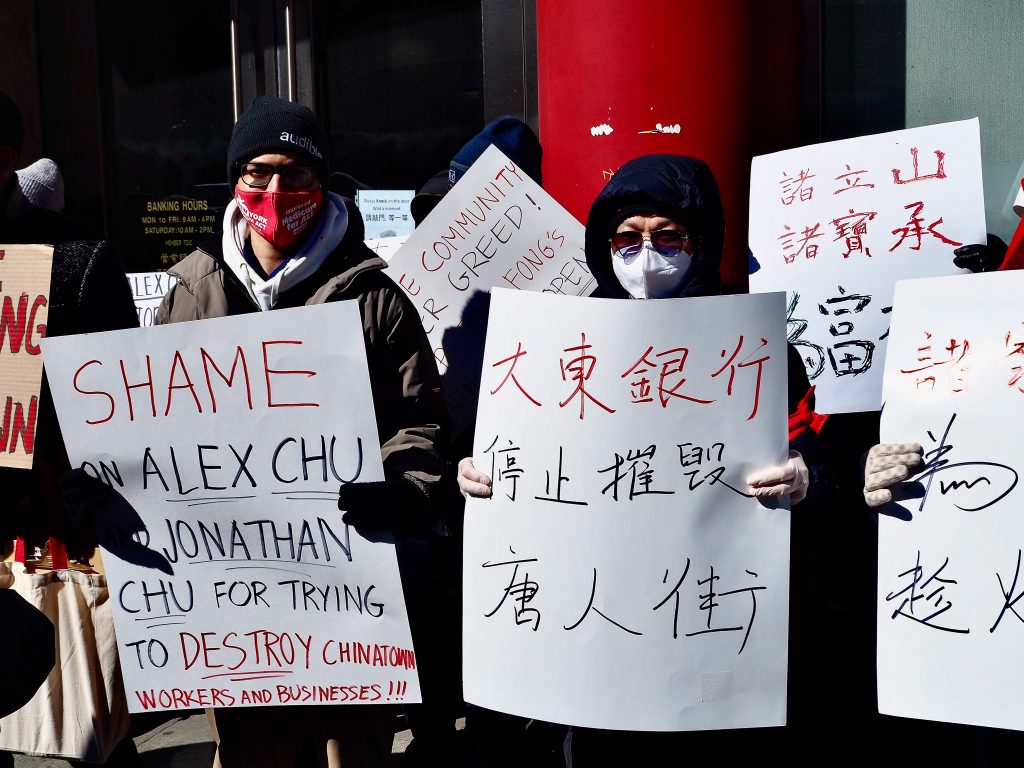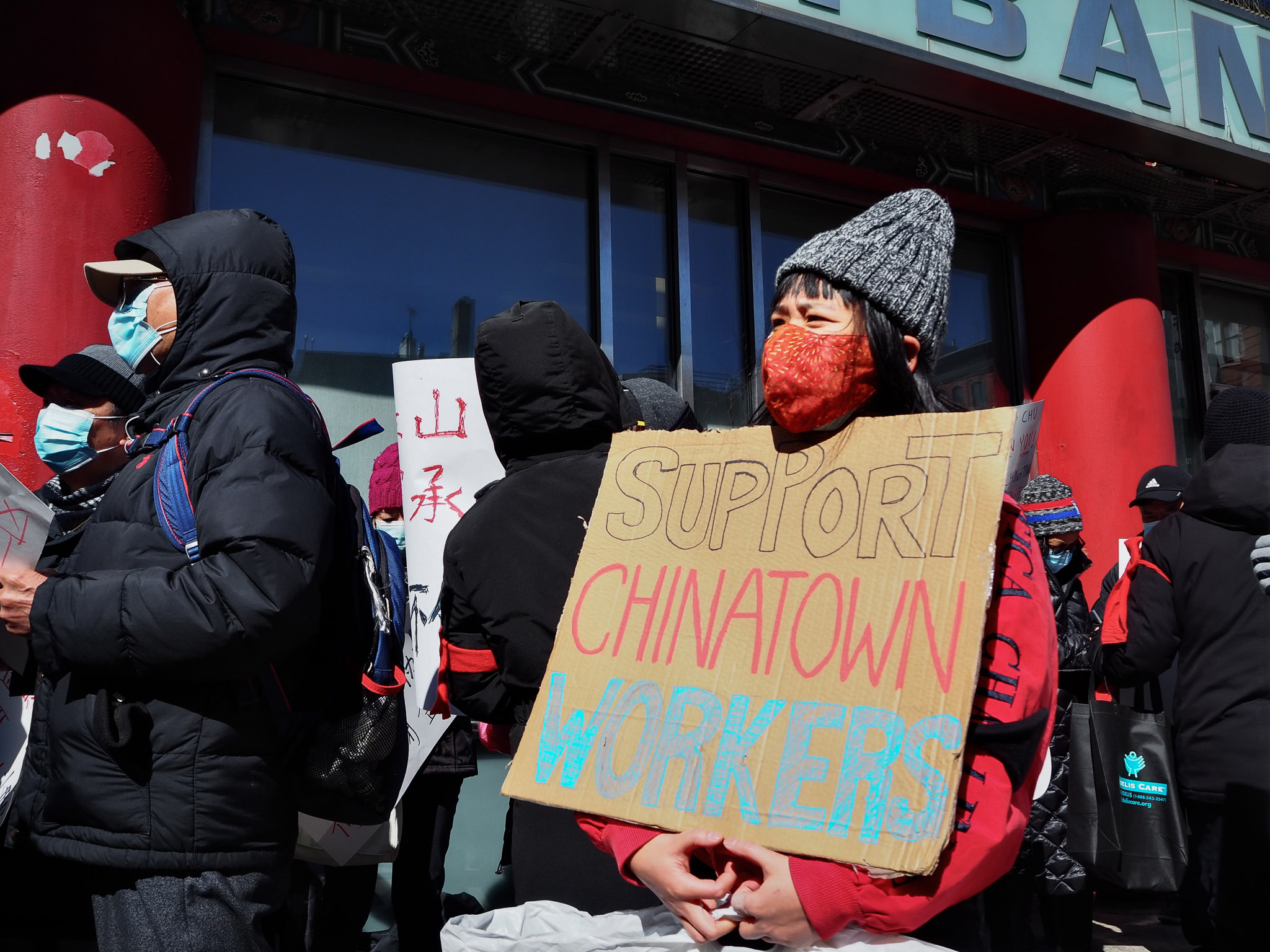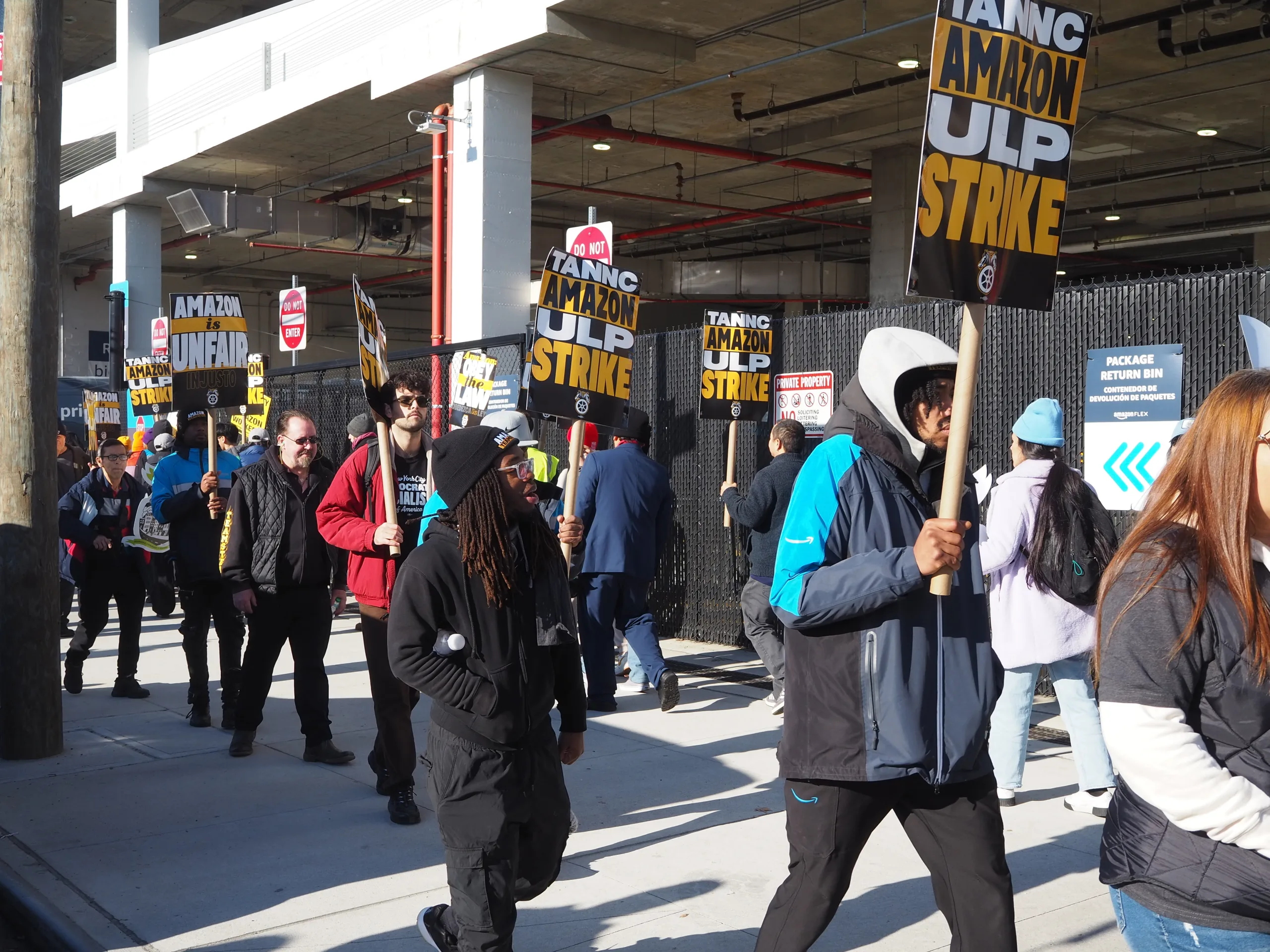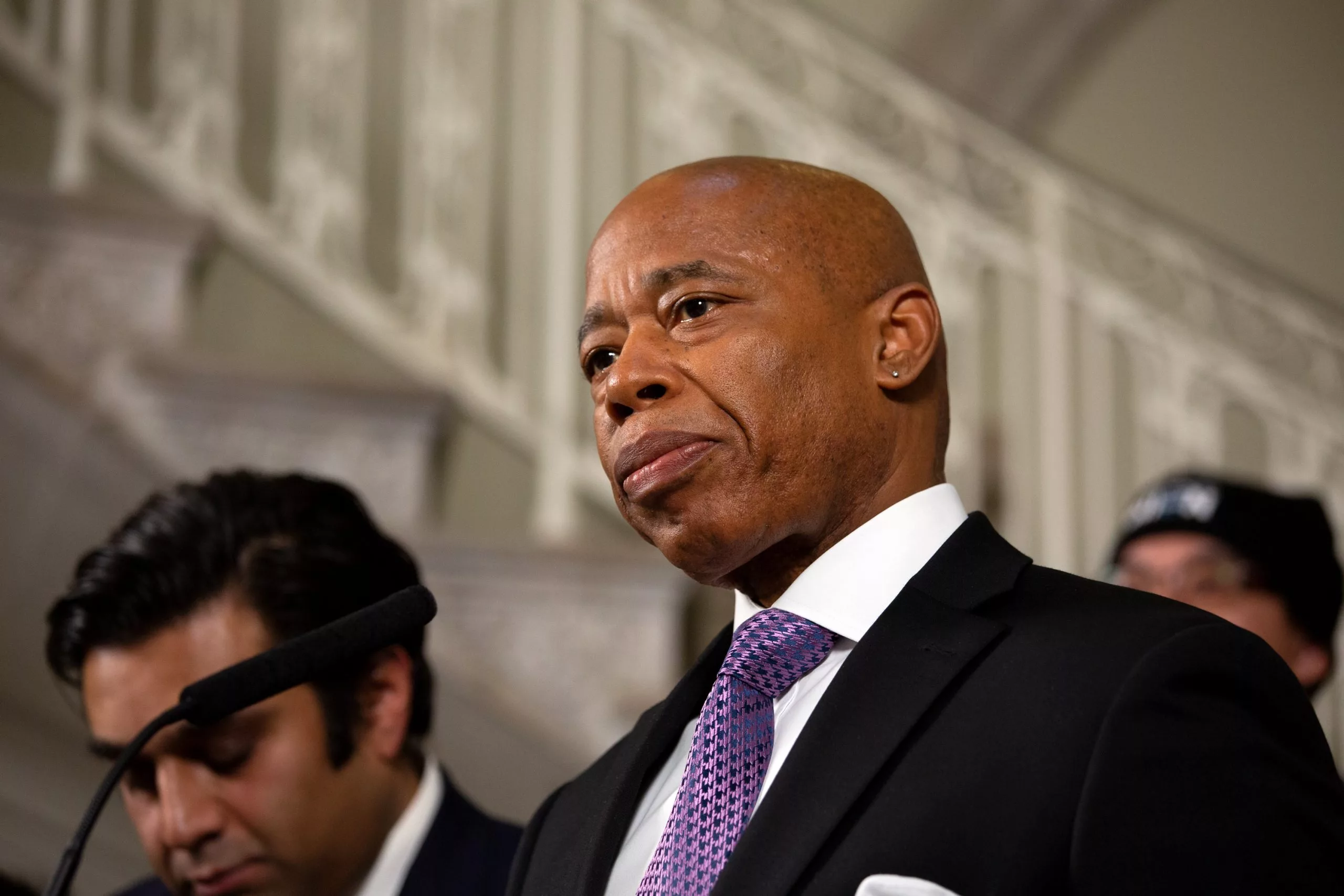As news broke last week that Jing Fong, the largest restaurant in Chinatown, was planning on closing its nearly 800 seat dining room on March 7, news outlets began writing the restaurant’s obituary; another historic New York institution fallen victim to the pandemic.
For John Chen, who has been a waiter at Jing Fong since 1993, the prospect of one day returning to work kept his spirits alive throughout the pandemic. With the dining room closed since the prohibition on indoor dining last month, workers like Chen have been out of work, sustaining themselves and their families on what little they earn from unemployment.
“If the Jing Fong restaurant closes, my family and I will face the loss of financial resources,” said Chen. “My work income is the main source of family income. Life will be very difficult.”
Workers at Jing Fong are refusing to go down without a fight.
On Tuesday, over one hundred people gathered outside East Bank on Canal and Centre Street, to demand Jing Fong’s landlord Alex Chu and his son Jonathan Chu keep the restaurant’s dining room open. Around 70 workers may lose their jobs.
Workers attempted to hand-deliver a letter stating their demands but were denied entry by bank employees with the assistance of the NYPD. Undeterred, workers and their supporters circled around the bank several times chanting “Save Jing Fong, Save Chinatown!” and “Shame on Alex Chu!“
Also Read: Pearl River Mart Was Never Just a Store. It Was Always a Movement
The Chu family, which owns East Bank, is one of the largest and most powerful families in Chinatown. Several of the new hotel developments in Chinatown are owned by the Chus and Jonathan Chu sits on the Board of Directors of the Museum of Chinese in America.
According to Jing Fong, during the pandemic, the restaurant’s sales drastically declined by 85 percent and the restaurant lost nearly $6 million. In a statement shared with Documented, Truman Lam, Jing Fong’s current manager and operator stated that with the “drastic decline in sales and mounting losses sustained over the course of a year, we needed to make the tough call to close our indoor dining space and redirect our resources in hopes to continue our operations.” Documented was not able to reach the Chu family.
Although the dining room is slated to close, it will continue to operate the kitchen and provide customers with outdoor dining, takeout, and delivery options. Jing Fong’s second location on the Upper West Side will continue to operate as normal.
According to the union, Jing Fong’s lease with the Chus was unusual in that it required the restaurant not only to pay property taxes but also to share a portion of the restaurant’s profits with the landlord.
“During the good times the landlord made off like a bandit so this is the time that the landlord should do the right thing for the community and for the workers,” says Nelson Mar, president of 318 Restaurant Workers Union. “This is not simply about a workplace, for many this a social institution in the community.”
The workers are fighting for their jobs but also to keep Chinatown’s only restaurant workers union alive.
First established in 1980, after workers at the now-defunct Silver Palace restaurant organized against wage theft, 318 Restaurant Workers Union grew to become the only union representing Chinese restaurant workers. At its peak, it represented 200 workers in Chinatown. As Mar explains, the establishment of an independent union came as a response to the cold reception the workers received after reaching out to the established unions. If all of the workers are fired, the union will lose many dues paying members and will take a major financial hit.
Also read: Chinese Students in the US Caught Up in Geopolitics and Trump’s Immigration Crackdown

“Our union was created because restaurant workers did not feel that the union movement at the time, back in the late 70’s-early ’80s, was really not interested in representing workers who were not white.”
At Jing Fong, workers first attempted to organize against widespread wage theft in 1994. John Chen, who was one of the earliest to organize, recalls the miserable conditions he was forced to endure.
“Before the establishment of the labor union, I worked more than 60 hours a week, and I still couldn’t get the minimum wage and overtime wage,” he said. “The boss and manager also misappropriated the workers’ tips.”
Also Read: After Yang Song’s Death, Asian Sex Worker Advocates Call for Reduced Policing
After a year-long battle with the Lam family, who have owned the restaurant since 1978, the New York State Attorney General’s office found the restaurant was in violation of labor law and forced the restaurant to pay $1.13 million in back wages in a historic settlement.
“The struggle for justice and Jing Fong was sort of a landmark, watershed moment in the labor movement for Chinese American labor in general,” Mar explains. “Through the Jin Fong struggle, we brought national attention to the issue of the sweatshop conditions in the restaurant industry.”
However, it would not be until 2012 that workers were finally allowed to collectively bargain a contract with the restaurant, making it the second restaurant in Chinatown, after Silver Palace, to become a union shop. That three-decade-long struggle has not been forgotten by the workers.
“The establishment of the labor union has improved the status of our workers, the working environment, and the working conditions,” says Chen.
As workers picketed outside the East Bank, the notion of displacement and gentrification hung heavy in the air. Many chanted “Chinatown is not a museum!” Their chants were a reminder that the neighborhood is not merely a relic of the past to be gawked at by tourists but a living, breathing community looking to survive into the future.
Yet, with rising rents, many Chinese residents are slowly being priced out. In a community that has a 30 percent poverty rate, rising rents have burdened 23 percent of its population. In fact, the Asian population in Chinatown has steadily decreased as the white population increased.
Still, the struggle at Jing Fong has inspired community leaders such Zishun Ning, a community organizer with the Coalition to Protect Chinatown and the Lower East Side, who views the labor struggle as a model for others to follow.
“With so many historic businesses closing, very rarely we see workers coming out saying that it does not have to be this way and pointing out the root causes, that it’s the developers and the landlord,” he said. “This is where the labor movement should go, beyond fighting in individual shops but seeing that their future is actually tied to the community issues. Workers should be the agent of change in their community.”
















